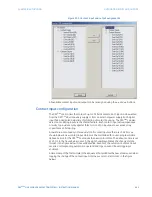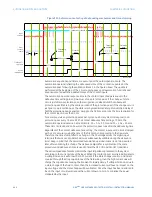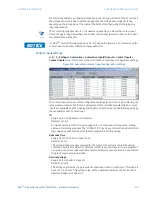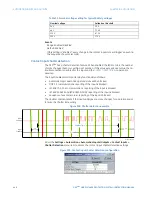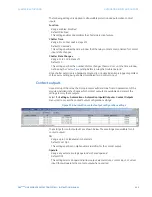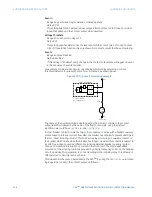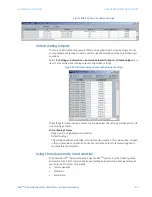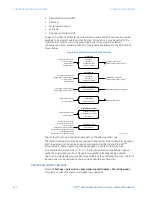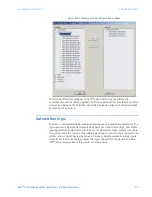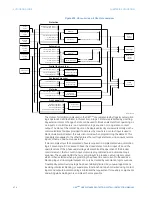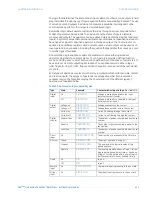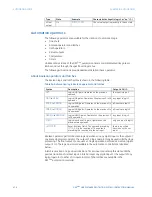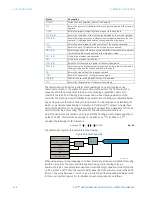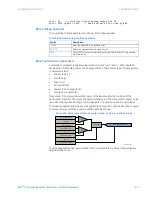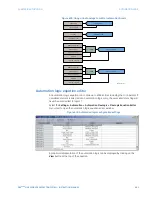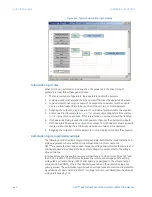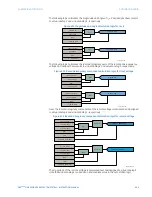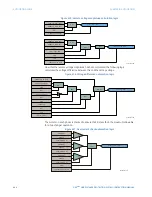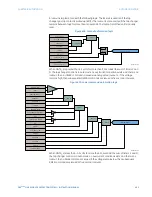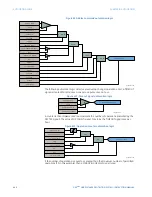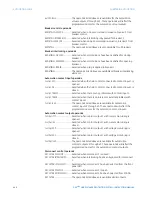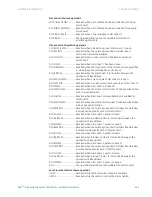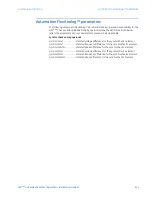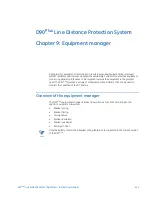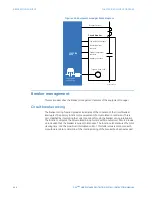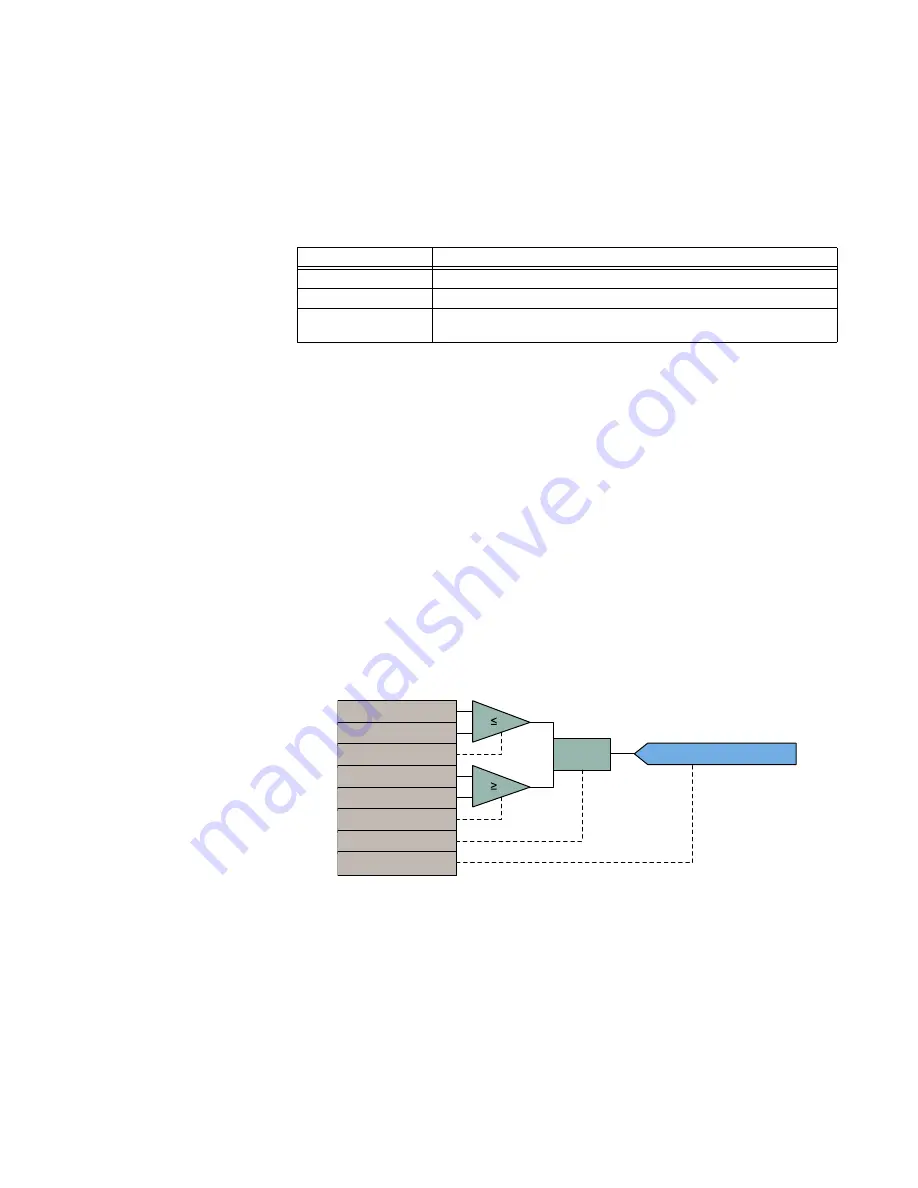
CHAPTER 8: AUTOMATION
AUTOMATION LOGIC
D90
PLUS
LINE DISTANCE PROTECTION SYSTEM – INSTRUCTION MANUAL
479
AVO1 = 20
// initialize virtual analog output 1 to 20
AVO1 + SRC4 Ig RMS = AVO3
// add an offset of 20 to the Ig RMS
About editing operators
The automation editing operators are shown in the following table.
Table 38: Automation logic editing operators
About automation comparators
Automation comparators have two inputs that are denoted "+" and "–". Each inputs be
assigned to a FlexAnalog value or an analog constant. There are six types of comparators
in automation logic.
•
Greater than (>).
•
Less than (<).
•
Equal to (=).
•
Not equal to (
≠
).
•
Greater than or equal to (
≥
).
•
Less than or equal to (
≤
).
The output of the comparator will be logic 1 if the inputs satisfy the condition of the
particular comparator. Otherwise, the output will be logic 0. The comparator output can be
used as an input to Boolean logic or be assigned to an automation virtual output (AVO).
The following automation logic uses the greater than or equal to and the less than or equal
to comparators to test that a value is within a specified range.
Figure 406: Using comparators to verify a value is within a specified range
The following automation logic uses the less than comparator to check if two values are
approximately equal.
Syntax
Description
INSERT
Insert an operand in an equation list.
DELETE
Delete an operand from an equation list.
END
The first END encountered signifies the last line in the list of processed
logic operands.
65&)5(48(1&<
²
/(6625(4
65&)5(48(1&<
²
*5($7(525(4
$1'
$1'
)5(4&+(&.$92
)5(4&+(&.$92
$&'5

